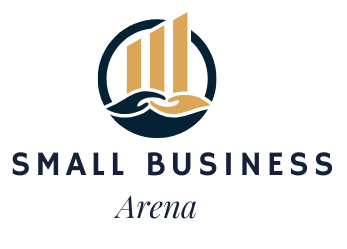The entrepreneurial dream: freedom, success, and the satisfaction of building something from the ground up. But for too many small business owners, that dream quickly turns into a nightmare. Late nights, mounting bills, and the constant fear of running out of cash become the daily reality. Are you one step away from business disaster? If the thought of checking your bank balance sends a shiver down your spine, you’re not alone.
The truth is, many small businesses stumble not because of a lack of passion or a bad product, but because of poor cash flow budget management. It’s the silent killer, the unseen force that can cripple even the most promising ventures. You might have a steady stream of sales, but if you’re not managing your incoming and outgoing cash effectively, you’re walking a tightrope with no safety net.
The Shocking Reality of Small Business Cash Flow (and the Threat of Negative Cash Flow):
- Delayed Payments: Customers paying late can create a domino effect, leading to negative cash flow and leaving you unable to pay your own bills.
- Unexpected Expenses: Equipment breakdowns, sudden price increases, and unforeseen emergencies can drain your reserves, quickly pushing you into negative cash flow.
- Poor Inventory Management: Holding too much inventory ties up valuable cash, while holding too little can lead to lost sales, both contributing to negative cash flow.
- Lack of Financial Forecasting: Without a clear picture of your future cash flow, you’re flying blind, making it nearly impossible to avoid negative cash flow.
The difference between a thriving business and a failing one often boils down to effective cash flow management.
But there’s hope. We’ve outlined some actions to get you started in our free report. So be sure to check it out. In the meantime, be sure to follow the steps below.
Cash Flow 101: Your Survival Toolkit (and How to Build a Strong Cash Flow Budget)
| Step | Description |
|---|---|
| 1. Understand Your Cash Flow Cycle: | Map out the flow of money in and out of your business. Identify your key revenue streams and expenses. Determine your average collection period and payment terms. This is the foundation of your cash flow budget. |
| 2. Create a Cash Flow Forecast (Your Cash Flow Budget): | Project your income and expenses for the next 3-6 months. Use historical data and industry trends to make informed predictions. Regularly update your forecast to reflect changes in your business. This is your cash flow budget. Need a tool? Try this free cash flow statement example tool |
| 3. Improve Your Accounts Receivable: | Invoice promptly and clearly. Offer incentives for early payment. Follow up on overdue invoices. Consider factoring receivables. This helps prevent negative cash flow. |
| 4. Manage Your Accounts Payable: | Negotiate favorable payment terms with suppliers. Pay bills on time to avoid late fees. Prioritize payments based on urgency and importance. This is crucial for maintaining a healthy cash flow budget. |
| 5. Control Your Expenses: | Cut unnecessary spending. Look for ways to reduce overhead costs. Regularly review your budget. This is a key component of a successful cash flow budget. |
| 6. Build a Cash Reserve: | Set aside a portion of your profits to cover unexpected expenses. Aim for a cash reserve that can cover 3-6 months of operating expenses. This is your safety net against negative cash flow. |
| 7. Leverage Technology: | Use accounting software to track your cash flow. Explore online payment platforms to streamline transactions. Use forecasting tools. Get a free cash flow report |
| 8. Seek Professional Advice: | Consult with an accountant or financial advisor. Get expert guidance on cash flow budget management. Consider a mentor. Chat with a finance expert |


Don’t let cash flow problems, or the specter of negative cash flow, derail your business. By implementing these strategies and creating a robust cash flow budget, you can take control of your finances and build a sustainable, profitable venture. The difference between a thriving business and a failing one often boils down to effective cash flow management. This guide gives you the tools to survive and prosper. Take the first step today, and secure your business’s future.
FAQ:
Q: How often should I update my cash flow budget?
A: Ideally, you should update your cash flow budget at least monthly. However, if your business experiences significant fluctuations in income or expenses, you may need to update it more frequently.
Q: What is factoring receivables?
A: Factoring receivables is a financial transaction where you sell your accounts receivable (invoices) to a third-party company (a factor) at a discount. This provides you with immediate cash flow and helps prevent negative cash flow.
Q: What accounting software do you recommend for cash flow budget management?
A: Popular options include QuickBooks Online, Xero, and FreshBooks. The best choice will depend on your specific needs and budget.
Q: My customers are consistently paying late. What can I do?
A: Implement clear payment terms, send timely invoices, offer incentives for early payment, and follow up on overdue invoices. You may also want to consider using a credit check service to assess the creditworthiness of new customers. This is essential for maintaining a healthy cash flow budget.
Q: I’m struggling to cut expenses. Where should I start?
A: Start by reviewing your cash flow budget and identifying areas where you can reduce spending. Consider negotiating with suppliers, cutting back on non-essential expenses, and exploring ways to improve efficiency.
Q: Can you show me a Cash Flow Statement Example?
A: Yes, you can try out a free cash flow statement example tool here on this site.


Leave a Reply